On 26 October 1946, Birolli, Guttuso and Morlotti signed a brief letter in Guttuso’s studio in Rome addressed to “our dear former Secessionists” (including Pizzinato, Santomaso and Vedova). In it they announce their decision to change the previously suggested name of Nuova Secessione Artistica Italiana into the more combative Fronte Nuovo. This new group was soon joined by the sculptors Viani, Fazzini, Franchina and Leoncillo; and the painters Corpora and Turcato. This was how the first post-war group uniting the most vital energies of young Italian painters came into being, with the aim of preparing them for the challenge of European – and particularly Neo-Cubist – art, rediscovered after the end of Fascism.
After presenting a united front at the 1948 Biennale, the group returned en masse (this time round with many other artists) for a major collective show promoted by the Alleanza della Cultura in Bologna. The exhibition was held in October of the same year, at the Palazzo di Re Enzo. On that occasion, the attacks on the “abstractionist” wing of the Fronte from the columns of the newspaper Rinascita and by Palmiro Togliatti sealed the group’s future dispersion. Besides - after the elections in April, from which the Christian Democrats emerged victorious, and the congress of Wroclaw held in August – the Communist Party had begun to formulate the principles of intransigent opposition in the cultural sphere too. This would soon lead to the full explication of “socialist realism,” which would be espoused, amongst others, by Guttuso and Pizzinato, former members of the Fronte Nuovo. After being undermined in Bologna, the Group officially split two years afterwards, marking the end of a difficult but nonetheless important chapter of Italian art.
From its ashes, and in particular from that part of the group most inclined to a non-figurative language, sprang a new cluster of artists (Birolli, Corpora, Morlotti, Santomaso, Turcato and Vedova from the Fronte, in addition to Afro and the youngest member Moreni). The “Eight Italian painters” – as they were dubbed by Lionello Venturi in a book published in May 1952, destined to become their main critical vehicle – debuted at the 1952 Venice Biennale and exhibited on a more or less united basis in Italy and in Europe until 1954. Their work expressed a language that was “abstract with recollections?? of nature”, which Venturi himself had christened “abstract-concrete” years previously. This balance, which was ultimately ambiguous and unresolved, was the cement uniting the activities of “the Eight” for some time (and of other Italian artists who looked to them during that period). Still, already at the 27th Biennale of 1954 it was possible to detect the first rifts that would ultimately result in the group’s disbandment (with the departure of Morlotti, who answered the call to the “last naturalism” of Francesco Arcangeli, and soon after of Vedova).
Italia 1946-1954: dal Neocubismo all’“Astratto-Concreto”
Italy 1946-1954: from Neo-Cubism to “Abstract-Concrete” Art

Works of art

Veduta di città
The lower section of the canvas, which is divided horizontally into two nearly equal halves, contains a dense weave of virtually monochrome signs. The upper section contains a brightly coloured and chaotic view of a city, which grazes the extremely high, almost obscured skyline, flooding the space with countless chromatic notes.
Painting
20th century AD
Landscape

Porto
Girders, scaffolding, other indefinite structures evoking the intense activity of a cargo shipping port. A work scene, therefore – but everything takes place on the surface, no perspective, a summarily sketched background indicated by a few pure colours (ochre for the land, beneath the blue of the sea), unrelated to any plausible representation of nature.
Painting
20th century AD
Abstract
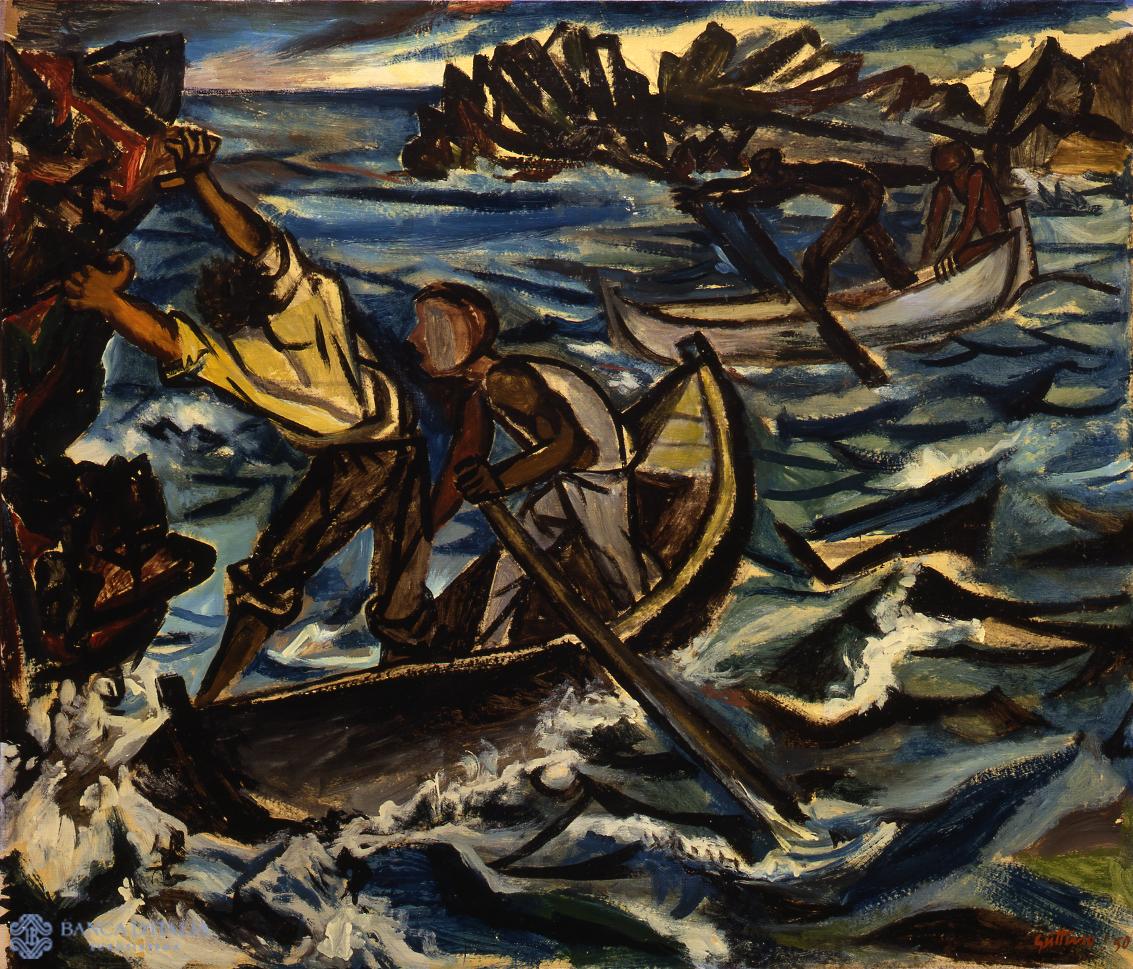
Pescatori e mareggiata
Two boats and their occupants are cutting through a stormy sea. The deep blues, the iron greys and the sudden white foam form the limited chromatic range of the painting, which treats a theme already taken up by Guttuso in the summer of 1949 and again in the following summer: tuna fishing off the Calabrian coast of Scilla.
Painting
20th century AD
Figurative
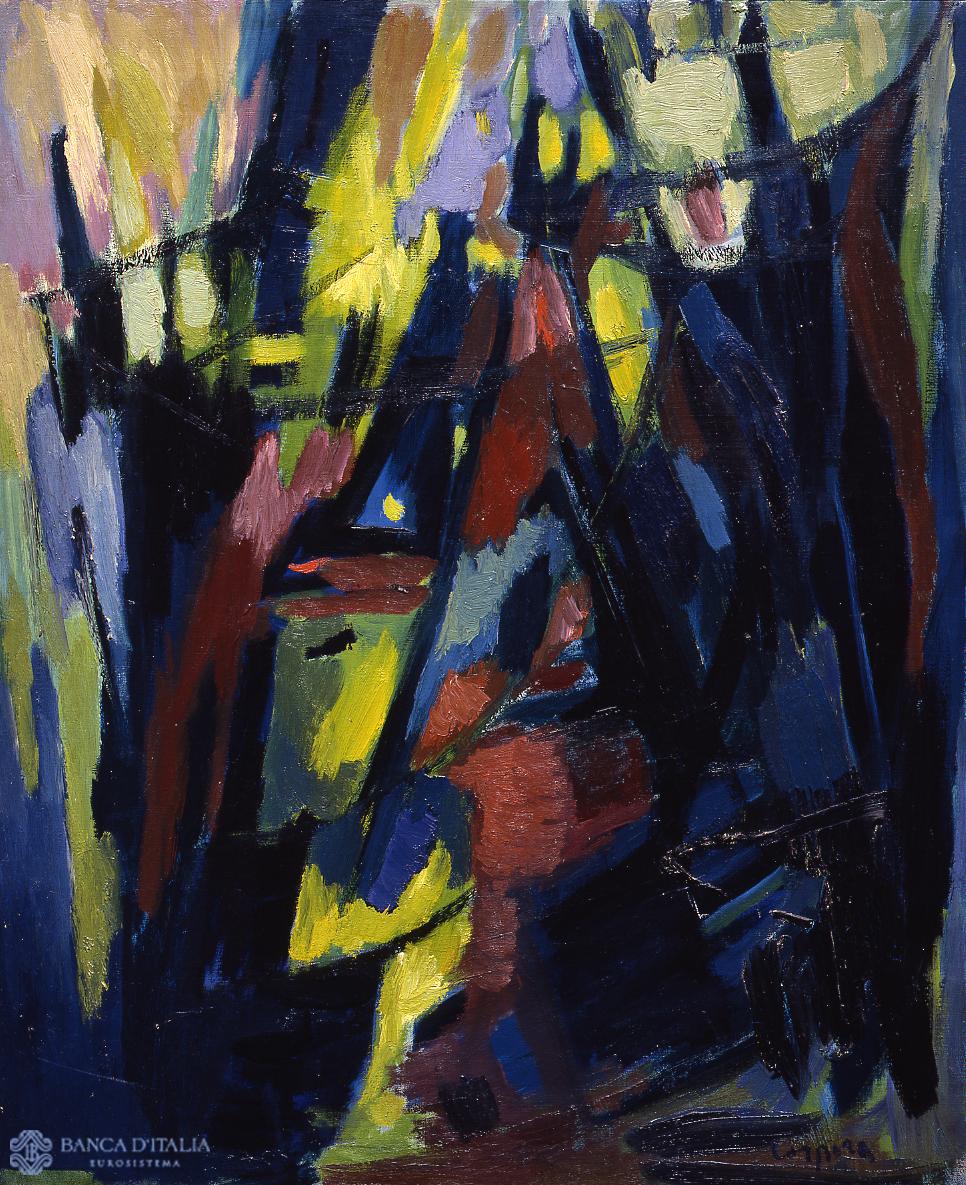
Paesaggio
One sees no mimetic forms of the natural world in these vivid colours, alternating between bursts of light and darkening ravines in shadow, between sombre blacks and fiery reds, rendered freely and with gestural immediacy. Beginning in 1950-51, Corpora’s Neo-Cubism exploded into shards and fragments, which blunted and almost concealed the sliver of reality from which the image derives.
Painting
20th century AD
Abstract

Officina di notte
Indistinguishable machines saturate the composition’s surface, governed by the sullen reverberations of frames and barriers that create the image’s surface rhythm, with its imperfectly traced geometrical structure.
Painting
20th century AD
Abstract
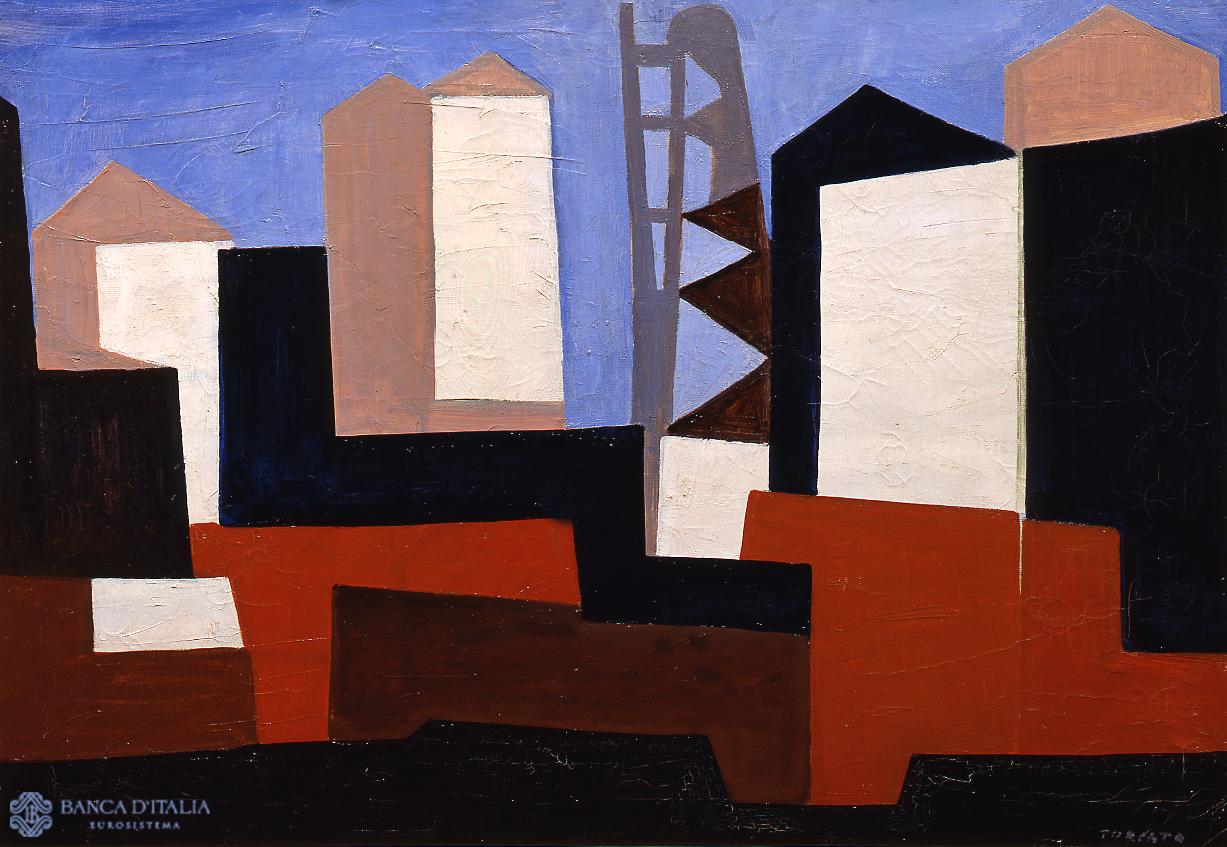
Officina
The industrial buildings are presented as pure geometric forms exalted by contrasts between ranges of pure colours - luminous whites, dull blues and dark reds. The theme of two-dimensional representation, which would soon gain ground in his abstract works and which marks this painting with a radical abandonment of any illusion of perspective, is here turned into a clearly evident solution by Turcato.
Painting
20th century AD
Abstract

Natura morta con caffettiera
In this work – which, in its composition of everyday objects, reveals its descent from the modern tradition inaugurated by Cézanne – Afro directs his range of luminous colours towards new effects reminiscent of the great traditions of Venetian painting.
Painting
Still life

Massacro
The bodies of the fallen lie on the ground, shot, in red rivers of blood. A horse bends over one, seeming to question the reason for such a death. Two men, one of them armed, watch; are they perhaps responsible for this massacre? An obtuse and questioning silence pervades the scene.
Painting
20th century AD
Figurative
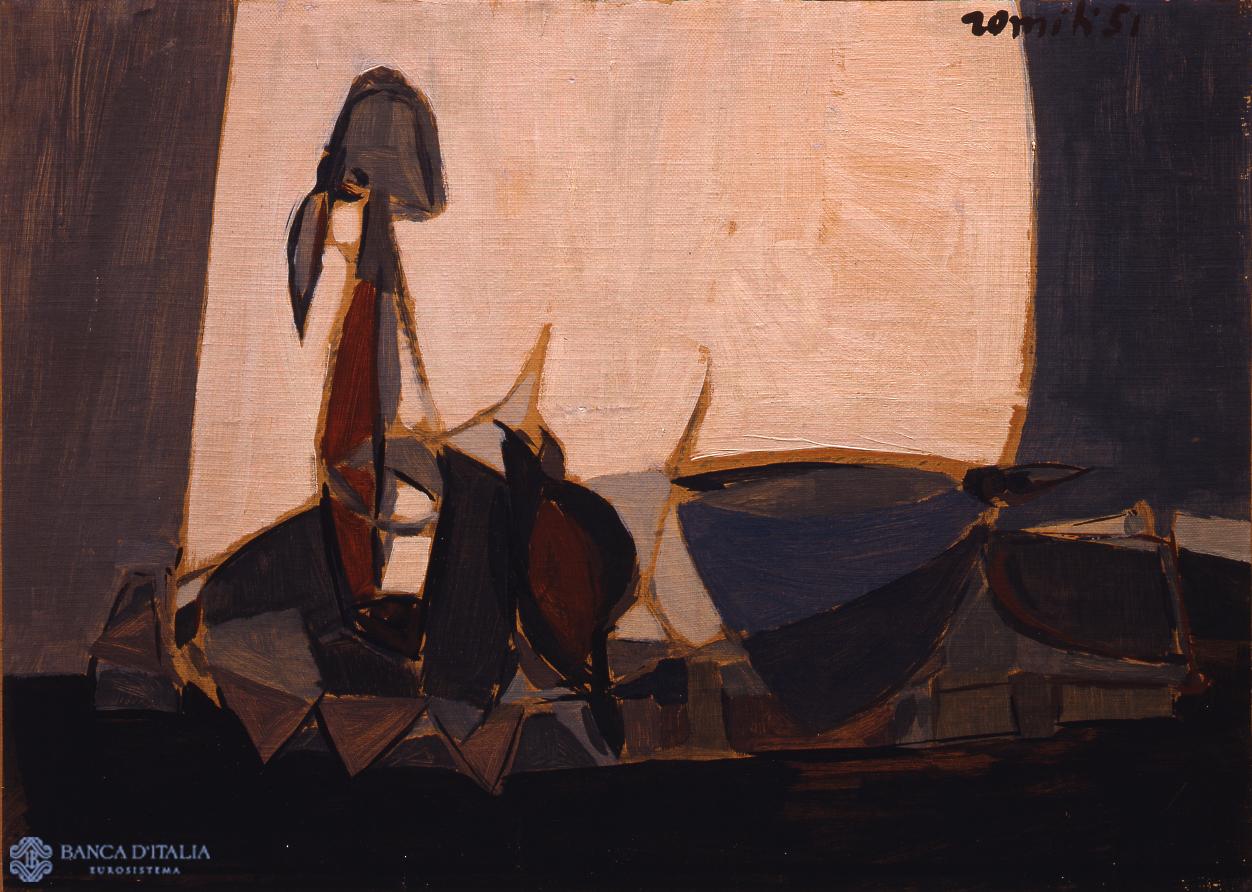
Imbarcazioni
Forms of indefinite substance, brought back by a vague memory of nature to the geometric canon (ovals, triangles, trapezoids…), vividly defined by a heavy outline, are interlocked on the horizontal plane – as though they were items from a still life.
Painting
20th century AD
Abstract
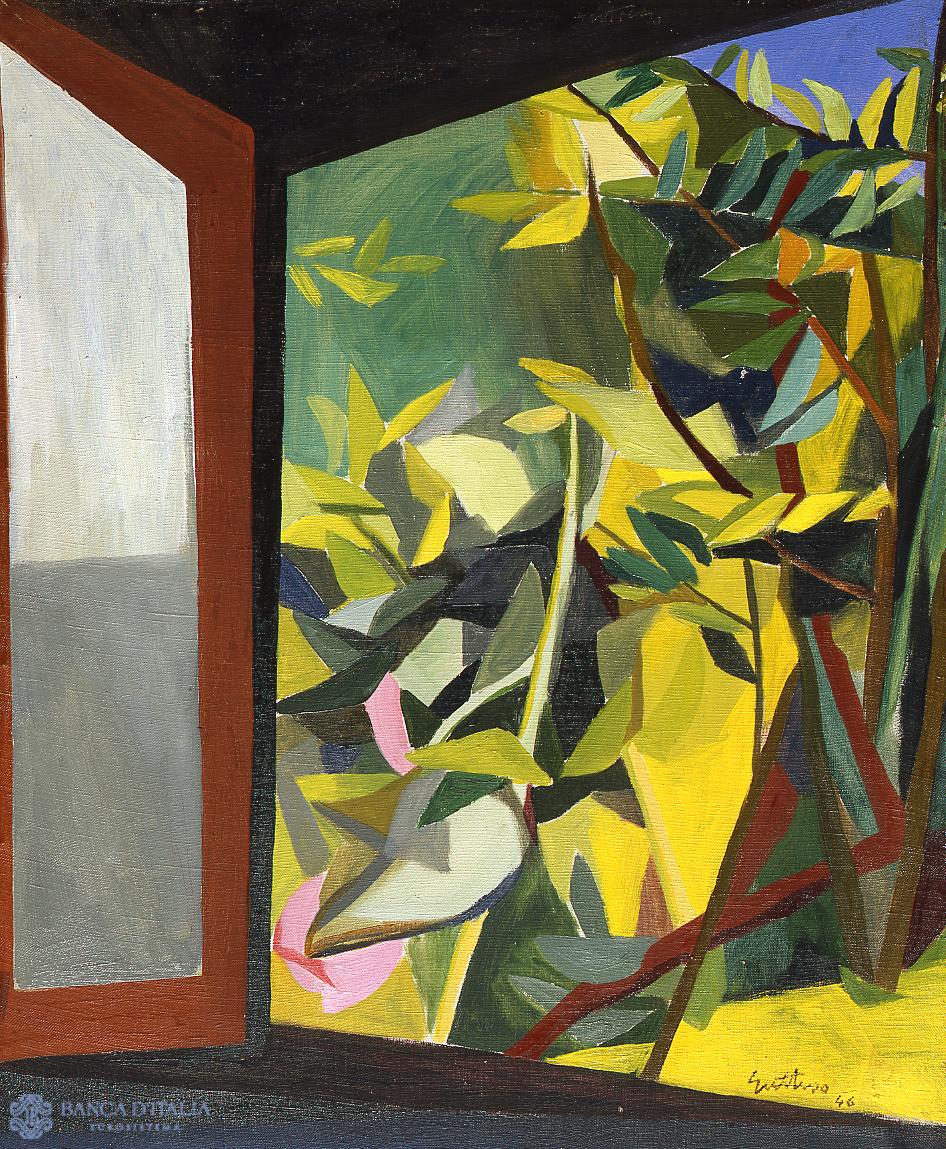
Finestra sul verde
One half of the window is partly open emphasizing, with its summarily outlined embrasure, its essentially prospective function: further beyond opens a frame of disorderly undergrowth, full of light, dominated by yellows and greens which are here and there added to by touches of pink or blue, enclosed by the dark frame of the window and seems to be projected onto a cinema screen.
Painting
20th century AD
Landscape
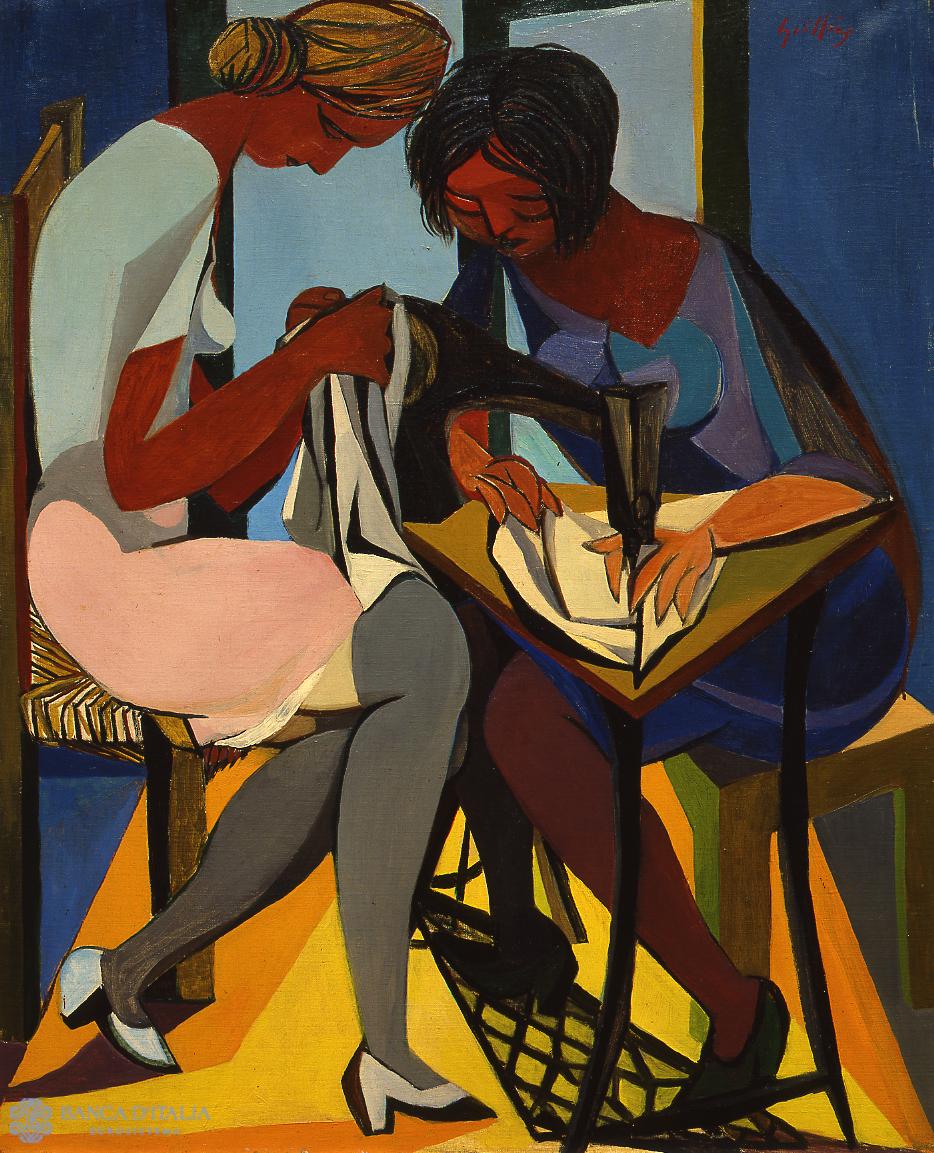
Le cucitrici
Seated close together in a very cramped space are two women, one facing the viewer and the other in profile, intent on what is obviously their work as seamstresses, carried out in the back of a small artisan’s studio. The picture thus brings us into a busy workplace.
Painting
20th century AD
Figurative

Composizione 777
Natural elements – brambles, perhaps, or bushes – appear, transfigured, behind the dark, wooden barrier of rustic fencing. Or are they not, on the contrary, mere signs, colours, geometries that trouble the surface?
Painting
20th century AD
Abstract

Composizione
Just a few, rigorously geometric forms interlocking on the small-scale surface of the painting. They are filled by a red and a black, a purest white and a tenuous aquamarine. No sort of chiaroscuro, internal to any of the forms: colours, all of them, didactically pure, conveying no trace of feeling of atmosphere.
Painting
20th century AD
Abstract
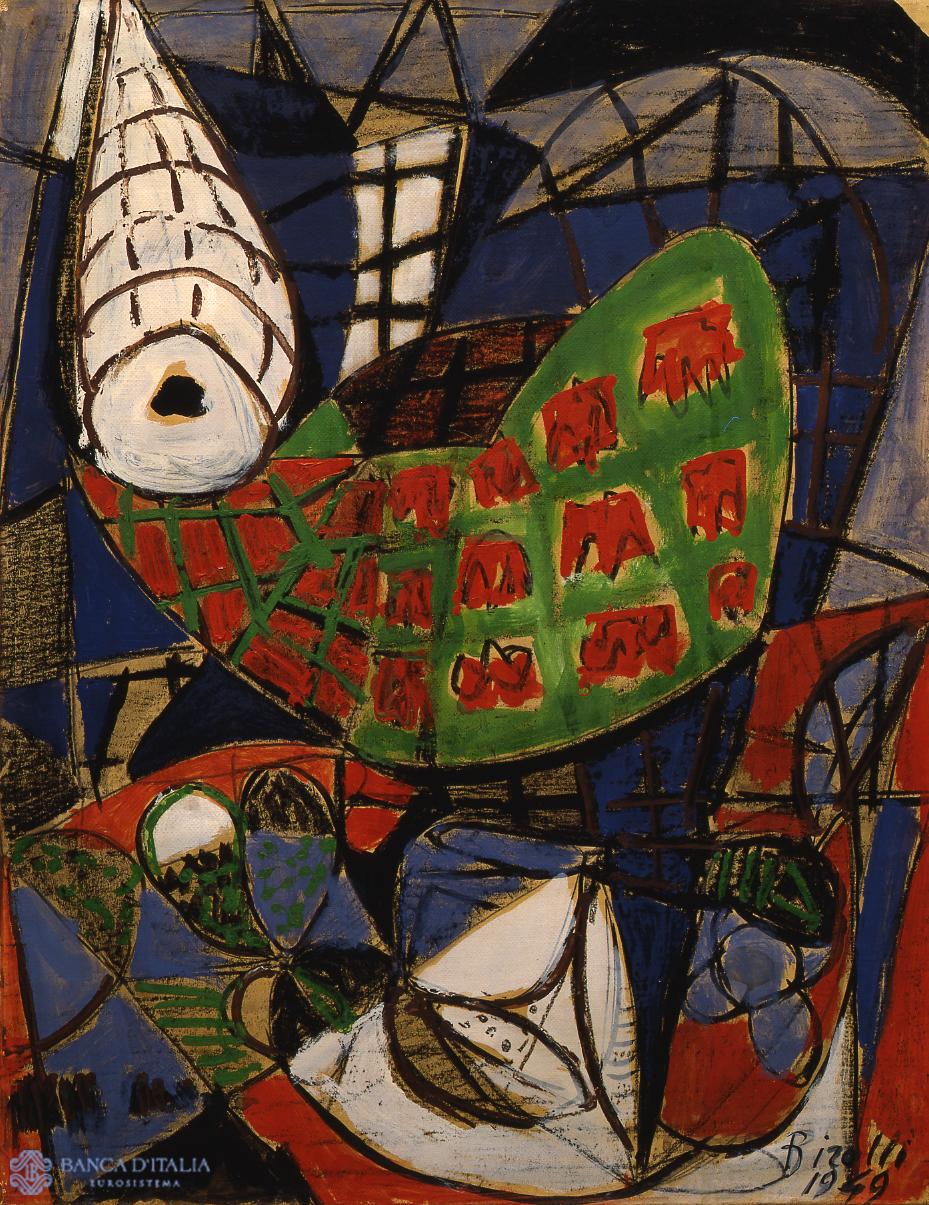
Composizione
A jumble of objects are strewn across the outermost surface of the painting. It is impossible to identify them all but in any event they pertain to fishing. This was a frequent subject of Birolli’s in those years, when his activity in Milan and Paris alternated with protracted periods of work on the coasts of Brittany.
Painting
20th century AD
Abstract
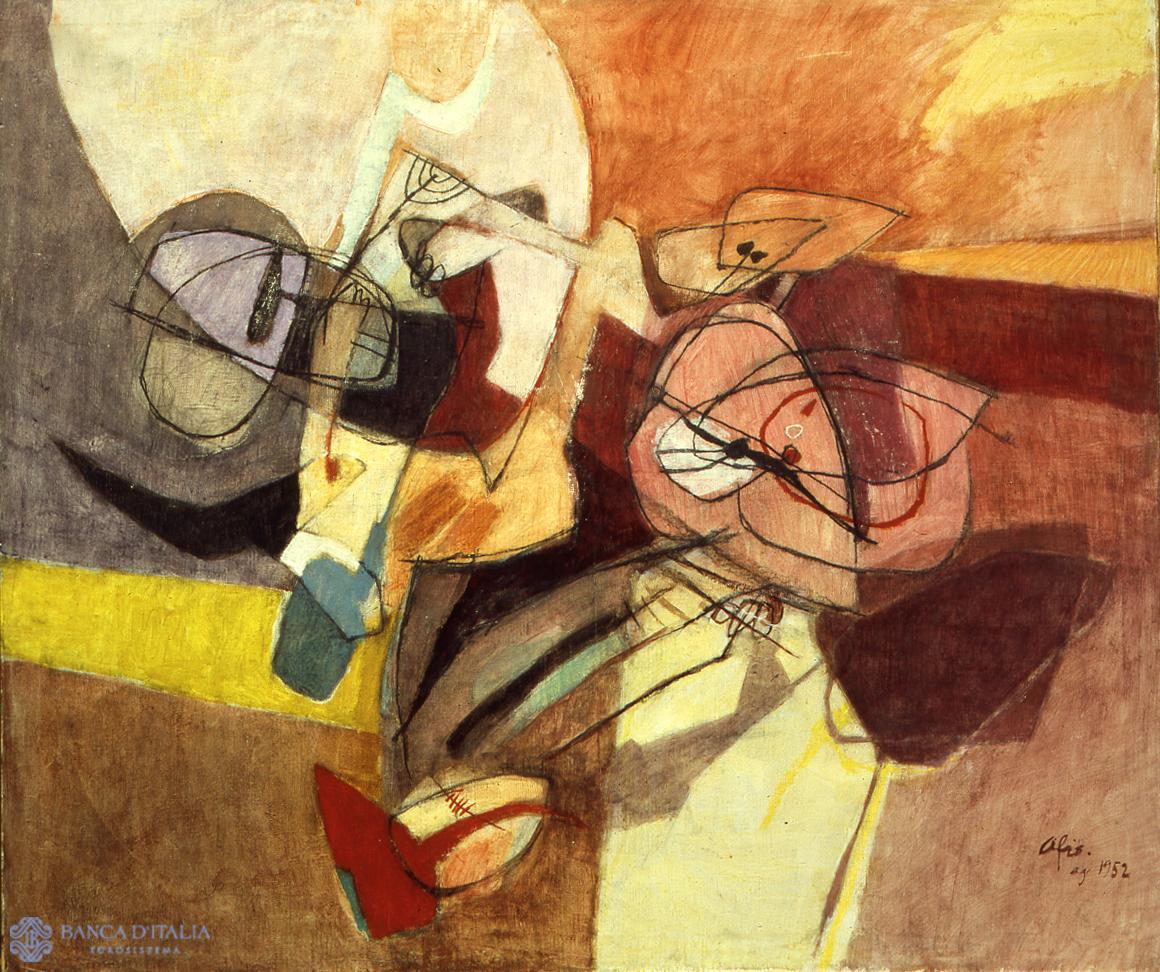
Agosto in Friuli
Heaped at the centre of the painting are forms by now unmindful of the sensible world, which appear to have arranged to meet there and weave a mysterious dialogue. They are bathed in mottled light scored mainly by yellows and oranges, but with pink, brown, white and blue notes echoing throughout. Chromatic blocks that are shot through and joined to one other by a faint interrogative, recurring sign.
Painting
20th century AD
Abstract
